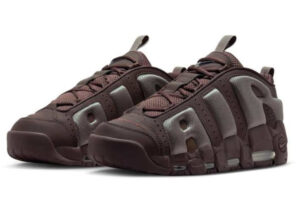There’s something about the west—untamed, exposed, and honest.
For Jordy Smith, the South African powerhouse and perennial World Tour threat, Western Australia isn’t just another surf stop. It’s a place that speaks to something deeper. Something primal. In “West Is Best,” a short film shot during his time in Margaret River, Jordy brings us along for the ride—not just on waves, but through a landscape that mirrors his own style: powerful, raw, and uncompromising.
This isn’t just a travelogue. It’s a declaration.
The Pull of the West
Margaret River has long been a fixture on the Championship Tour for good reason. The region’s coastline is carved out of granite and wind, hammered by swells that travel unchecked across the Indian Ocean. It’s where waves don’t just roll—they detonate.
For Jordy Smith, this place feels like home. “It reminds me so much of the west coast of South Africa,” he says in the film. “It’s so raw and every little swell hits the coast with so much power.”
That’s not just poetic. That’s geological fact. The bathymetry here—how the sea floor shapes wave energy—is aggressive. There’s no protection from the full force of the ocean. No mellow corners. Just unfiltered energy slamming into reef and rock.
To some, that’s intimidating.
To Jordy, that’s freedom.
Surfing With Teeth
Jordy Smith isn’t a stylist in the traditional sense. He’s a sculptor, carving with precision but with weight. He surfs like someone raised in tough water—because he was. Born and bred in Durban, South Africa, Jordy’s not afraid of power. He thrives in it. He needs it.
And in West Aus, power is everywhere. Every swell that shows up is freighted with potential. It doesn’t just offer opportunity. It demands commitment.
That’s what makes this film so refreshing. It’s not glossy. It’s not about perfect waves or slow-motion showboating. It’s about real surfing. Heavy water. Foam in the face. Speed over polish.
Jordy attacks each section with the kind of controlled aggression that’s become his signature. Carves so deep they echo. Airs when the wind allows. Lines drawn with the clarity of someone who sees the wave for what it is: a living, moving wall of possibility.
The Culture of the Road
“Thanks so much for watching our short films on the road,” Jordy signs off in the clip. It’s a casual phrase, but it contains a whole philosophy.
Because surfing at this level isn’t just about contests. It’s about rhythm. Finding it. Protecting it. Living it.
Life on the road means constant change—new swells, new setups, new energy. But it also sharpens the senses. It forces presence. When you’re chasing surf, you’re chasing time itself: tide, light, wind, swell, all converging in perfect moments that last maybe 15 seconds.
Jordy and his crew understand that. And in the film, you see it. The sessions are raw, yes, but they’re also joyful. There’s laughter. There’s grit. There’s downtime and drone time and that golden Western Australian light that makes every frame feel like it was painted in real time.
It’s not curated. It’s lived.
Margaret River: More Than a Stop
Margaret River isn’t just a surf town. It’s a crucible.
The wave at Main Break is famous for its unpredictability—a big, open-ocean wall that shifts and mutates with each set. One minute it’s clean and playful. The next it’s double overhead and throwing like Pipe’s wild cousin.
Then there’s The Box, just across the channel—a slabby, terrifying reef break that’s more boil than barrel. If you don’t commit, you don’t come up clean.
That’s the testing ground Jordy chose.
It speaks to his mindset. Not just surviving on tour, but thriving in heavy conditions. It’s not about chasing points. It’s about proving something—to yourself, to the ocean, to the moment.
Because in waves like these, the ocean doesn’t care about rankings. It only respects commitment.
Style vs Substance
In an era where the surf world often gets caught up in style wars—who’s more “flowy,” who’s more “tech”—Jordy stands in his own lane. He’s not trying to be the next someone. He’s just Jordy.
His turns have volume. His approach is pragmatic. He uses what the wave gives him, and he gives it back with interest.
In West Aus, that honesty shines.
The film doesn’t slow things down to spoon-feed you the highlights. It lets the waves talk. And what they say—when translated through Jordy’s boards—is that power and style aren’t mutually exclusive. When done right, they’re the same thing.
A Different Kind of Surf Film
“West Is Best” doesn’t try to be a magnum opus. It’s not a feature-length odyssey. It’s tight, raw, and visceral—just like the waves it captures.
That’s its strength.
In an age of overproduced content, Jordy’s film is a breath of offshore air. It respects the viewer. It knows that if you’ve ever paddled into heavy water, you don’t need 10 angles and a drone shot to feel the drop. You just need to see it done right.
And that’s what this film does. It shows you someone doing it right. Someone who understands that surfing isn’t about pretending the ocean is your playground—it’s about meeting it with respect, skill, and a little bit of recklessness.
The Legacy of the West
Western Australia has long had a mythic reputation in surf culture. It’s where legends go to test themselves. Where empty lineups meet massive energy. Where the stakes are high and the crowds are low.
And it’s having a moment.
As lineups grow more crowded on the East Coast, and as surf travel becomes more and more curated, West Aus stands as a kind of last frontier. Untouched. Underestimated. Unrelenting.
Jordy knows this. That’s why he keeps coming back.
Not for the cameras. Not for the points. But because in a world of surf pools and digital edits, there’s still something sacred about paddling into a wild, unscripted wave and letting instinct take over.
The Message Behind the Motion
At its core, this film and this trip are about reconnection.
To the ocean. To self. To something more than the sport.
Surfing can get lost in the noise—scores, sponsors, formats, rankings. But at the heart of it is this: You, a board, and a wave. No one else. No excuses. Just what you make of the moment.
That’s what the west offers. Clarity.
And Jordy Smith? He doesn’t just chase that clarity. He channels it.
Flow
The title says it all: West is Best.
Not because it’s easy. Not because it’s hyped. But because it’s honest. The west doesn’t care who you are. It doesn’t care what brand you ride for or how many followers you have. It asks one question:
Can you handle it?
And in “West Is Best,” Jordy Smith answers with every bottom turn, every committed line, every rail buried into the lip of a building-sized wave.
He doesn’t need to shout. The waves do that for him.
Credits & Gratitude
To Jordy and the team behind this film: thanks for keeping it real. For showing what happens when you strip it all down and just chase good waves with good people.
In a world of noise, this is signal.
And in a culture chasing perfection, this film reminds us why we started surfing in the first place—not to be seen, but to feel.
Let the west be wild. Let the waves be honest. Let the ride be worth it.
No comments yet.







